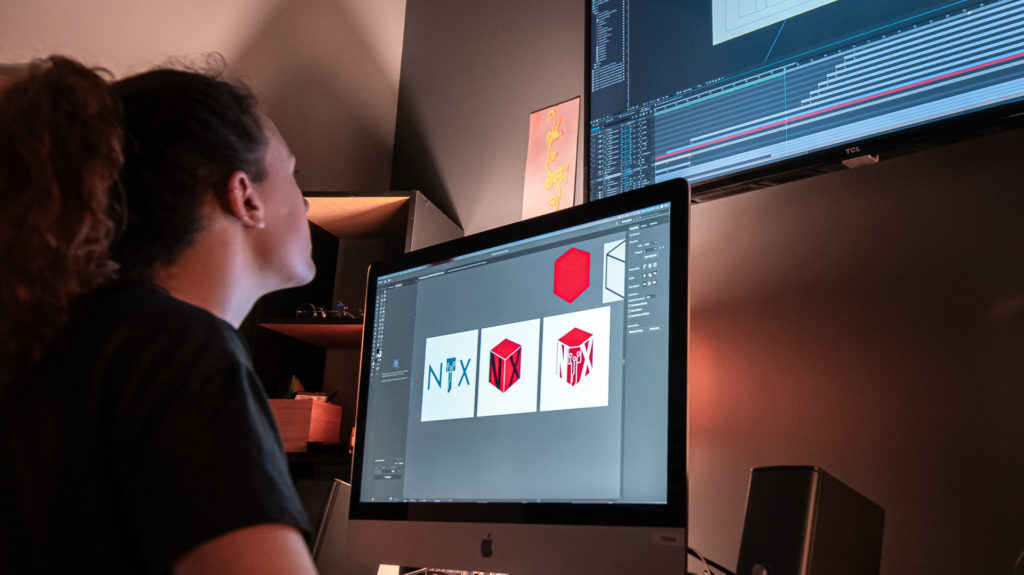Hey there, reader! Let me start by saying that I hope you’re staying safe and healthy. The circumstances that necessitate this blog post are extreme (somehow that’s putting it mildly) and life has changed in ways none of us expected. We’re faced with a new, challenging reality, and we’re all doing the best we can to make it through.
But, upsetting as they may be, you’re not here to dwell on the things we all already know. You’re here to learn how to make an e-learning video course.
I’m not a software developer, so if you’re looking for the nuts and bolts of platform building or streaming, this isn’t the blog for you. I’m here to approach this like the writer I am. That is, to explain how you should conceptualize your e-learning video course, and why that’s a thousand times more important than any hard computer science I could throw at you.
Any video production veteran will tell you that the work you do on the front end directly affects the quality of your finished work. If you don’t put the work in on your script, on pre-production, and you don’t think through your shooting schedule (shout out to my fellow ADs), you will suffer for it in the long run.
When you create an e-learning course, you can (should) follow all the same principles. This blog covers how to go about doing it.
What’s up with e-learning video courses?
First, a little background. Part of the country’s (and the world’s) effort to function in the new COVID-ian reality comes in the form of e-learning. The emergence of COVID-19 has brought e-learning to the fore for millions of people. In order to keep everyone safe, social distancing requires that we avoid meeting in person, which has effectively ended not only normal schooling methods, but also normal business practices, and many businesses in general are, at best, in a state of suspended animation and, at worst, at risk of failing because of the lack of demand in our economy.
For schools, the need for e-learning is obvious. Students of all ages still need an education, though hopefully the burden of oversight on parents is less for college-age students. When you can’t go to school, e-learning is the obvious alternative. In fact, and as you might be aware, e-learning was already becoming a more significant factor in education prior to the pandemic.
At its best, it’s clear, concise, visually and aurally (that’s sound, y’all) engaging, and the results are easily measurable. When those things are true, e-learning is wildly convenient. Even when the course isn’t perfect, busy people will often opt for online learning because it is still a more convenient choice than commuting. For people who work during the day, don’t have a car, or do have kids, the benefits of e-learning are clear. Done well, or even passably, it can seem really, really appealing. I mean, we’ve all seen those MasterClass commercials. It’s like Gordon Ramsay is in the room with me, asking if I’ve ever julienned a bell pepper before or if I just use that chef’s knife to pick my nose.
Ok, that’s a bad example. But the point is, a well-executed e-learning course can feel very intimate and personalized. Sometimes even more so than a class taught in person because you can imagine that the instructor is speaking directly to you. This brings me to the first tenet of creating a great e-learning course: Know your audience.
Getting to know your audience
Full disclosure: this isn’t just the first rule of creating an e-learning course. It’s also one of the most important aspects of content creation and marketing. If you’ve got a message to get out, the method you choose to do it is critical because you want to reach the right people. If you choose a method that’s not appealing to your audience, they won’t hear your message, even if it’s uniquely relevant to them.
You can’t oversimplify to an audience that hates being talked down to (I’m looking at you, engineers) and you can’t rely on whitepapers to engage workers in the hospitality industry. Knowing your audience will help you develop the content of your course in a way that will resonate with them.
Why should you care how your audience learns best?
I don’t see many instructors in academic settings asking this question, but if you’re a business owner trying to train employees, it might cross your mind. After all, you’re paying these people to pay attention to the lessons. Who cares if it’s dry? They should buck up and focus, dammit!
To that I say: have you ever sat through a boring presentation? I can’t count the number of times in college I couldn’t focus on a lesson I knew was important — hell, that I knew I should be interested in — because the professor wasn’t a good communicator. The bottom line is: no matter how hard someone wants to pay attention, using the wrong approach to teaching makes them worse at learning. If we’re talking about a potential employee, do you really want them stumbling around on the job because you couldn’t take the time to help them understand their responsibilities?
Didn’t think so.
How targeted should you be?
I’m not saying you need individualized versions of courses to help each employee learn the best they can. That degree of personalization isn’t realistic. But before you dismiss the notion of tailored e-learning content wholesale, think of it this way: it’s way harder to course correct an e-learning course than it is if you’re teaching in person. It’s not like an employee who is struggling can approach the software platform after class and inquire about office hours. It’s worth taking the time on the front end to make the courses you create as engaging as they can be. Just as with video production, you will be rewarded.
Eventually, being engaging might mean providing different options for visual learners vs. aural learners, as an example. For now, here are a few options you can consider.
- Text vs. Talk
We’ve all seen a talking head before. There’s a stigma around it that it’s a boring way to learn, but the truth is: maybe some people learn better that way! Regardless, chances are that an e-learning course will feature a host/instructor in some capacity. That said, well-crafted infographics have a time and a place as well. Remember what I said about visual vs. aural learners? It’s all about finding the right balance.
- Animation
We’ve done tons of animated explainer videos for our clients. They’re great for distilling complex ideas and making them easy to understand. They’re visually interesting as well as packed with valuable content. While an e-learning course might demand more depth in its totality, this is a fantastic tool for getting a baseline of understanding about a specific concept in the training. You can also use them to get your audience hyped about the subject matter!
- Tone
Will your audience engage with humor? Or should you go more serious? This is also an opportunity to communicate the tone of your brand to new employees and help them understand how to present themselves. Cute, sexy, or dangerous? How should your employees see your brand?
How do you determine who your audience is?
Now that I’ve (hopefully) convinced you that knowing your audience matters, it’s time to tackle figuring out who they are. And I don’t just mean the demographics. I mean figure out who they are. How do you do that?
It’s easy if you’re a teacher: your audience is assigned to you and it’s made up of a) people who have to study what you’re teaching; or b) people who want to study what you’re teaching. If you’re not in a strictly academic setting like a university, things are a little more nebulous. Essentially, you’re trying to determine:
- What’s their experience level (or what gaps do they have in their education)?
- What are their goals?
- What training do they want to receive?
Muriel goes into deciding what you want to teach over in her blog, but it’s important to know what people want to learn and what they think they need to do their jobs better.
How, you ask? Surveys are a great tool, especially in our current state of social distancing. Generally speaking, you can watch them (crazy, I know) or (even crazier) just ask them.
The tools for the Job
I wrote earlier that choosing a platform isn’t the most important aspect of e-learning course creation. At least, not at first. Still, we do need to talk about it. At this point, my main reasons for that claim should be fairly clear. It won’t matter where you put your e-learning course if it doesn’t check the right boxes as far as engagement.
The other reason we haven’t discussed it is because there’s no one right answer when it comes to e-learning platforms. It’s entirely dependent on the topic, the learners, and the types of activities they’ll do as part of the course. Some platforms are going to work better if you’re teaching people to code vs. giving them a history lesson.
Most platforms, if not all, allow you to include video content, images, and infographics. You can also integrate quizzes, personalize the course for your brand, and update brand assets easily. These platforms also let you group your course content how you choose. And this is great in one sense, but a bit of a trap in another.
You see, pacing is key when it comes to retention. You want to make sure that the rate and order in which you’re doling out content makes sense. Unfortunately, I don’t know what you’re teaching, so it’s hard for me to give you specific advice on this. All I can do is remind you to be cognizant of it. If you’re not aware of pacing and (for lack of a better term) “narrative throughlines” of your course, you’ll end up making the Star Wars: The Rise of Skywalker of e-learning courses.
Nobody wants that.
Get out there (virtually) and engage!
Obviously, I’m writing this during a very strange (and scary) time in the world. We’ll get through it, though. It won’t be easy and unfortunately a lot of people are going to suffer because of it. But we will get through it.
While I–and literally everyone else–can’t wait to leave these strange days behind us, my feeling is that e-learning won’t recede when things get back to some semblance of normal. As you can read in Jordan’s blog, e-learning was already well on its way to market saturation before this pandemic even hit, both in schools and businesses. I think necessity will breed a lot of useful innovation in this arena. I want this blog to be a resource for anyone looking to make the jump to e-learning so their business can succeed. Regardless of what is happening in the world and the economy.
That’s it, folks! I hope this was helpful. Remember: making a great e-learning course takes a lot more than knowledge and a software subscription. It’s about people! Stay safe, everybody. Wash your hands.


One Response